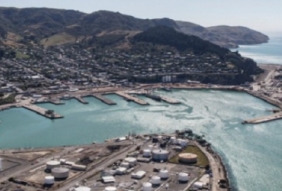
Posted on June 27, 2016
Lyttelton Port, like the rest of the world, cannot afford to stand still. It has plans for a huge redevelopment which will bring significant benefits to the Canterbury economy.
Few would argue the port company’s planned $1 billion redevelopment across about 30 years is anything other than exciting and commercially advantageous. But there are also potential environmental impacts which will need careful assessment and to be dealt with properly. The company has to convince the people of Canterbury it can avoid or mitigate against these repercussions on the state of the harbour, its shoreline and marine life.
The key to the proposed upgrade is a gargantuan dredging programme, which will allow the harbour to accommodate today’s huge container ships and make the port more attractive internationally. The intention is to deepen the harbour channel and dump the dredged sand, mud and silt about 6km offshore, northeast of the harbour entrance.
The scale of the dredging project is hard to imagine. It comes as little surprise that Lyttelton Port of Christchurch (LPC) is touting it as the country’s largest ever, one that is three times the volume of CentrePort’s dredging plan for Wellington Harbour.
Lyttelton’s existing harbour channel is currently about 10-metres deep at low tide. The idea is to extend it by another 6.5km towards and beyond the harbour mouth, doubling its present length, make it about 20m wider and as much as 6m deeper. This dredging work comes with a price tag of between $80 million and $120m.
There are compelling economic reasons for the work if the port operation is to thrive in the decades to come. LPC chief executive Peter Davie says the transformed channel will bring in increasingly large container ships and keep the port competitive. At present the biggest ships that can visit Lyttelton have a maximum capacity of 5000 containers; with the modifications, it could take vessels carrying as many as 8000.
Dredging would take place all day, every day, for about a year to remove the necessary 18 million cubic metres of sediment. The equivalent of three million concrete trucks’ worth of material would be dumped offshore over an area seven times larger than Hagley Park to a depth of about 1m.
Such a huge change to the natural landscape cannot come without side effects. The knack is to minimise those and ensure any degradation is not irreversible.
Davie says LPC will put in place a monitoring programme that would be the most extensive of any dredging project in New Zealand. The company has already spent $3m on environmental research as it prepares to lodge its resource consents and has received advice that marine life in the dredging area could be temporarily affected while the work is carried out.
The Lyttelton-Mt Herbert Community Board says it is taking a “pragmatic view” of the plans and we agree that is the right approach. The consenting process should ensure development is still allowed to take place, but the likely impacts on the environment must be carefully considered. The consenting process is likely to take as long as a year as the public and interested parties are given the opportunity to have their concerns heard and for commissioners to decide if the proposal can go ahead.
Source: stuff





